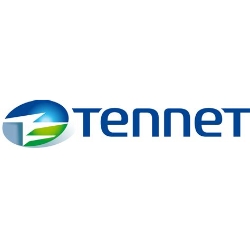TenneT
Operationalising Asset Information Management

To operationalise best practices for Asset Information Management, this project looked at Digital Transformation and collected feedback from numerous interviews.
TenneT benefitted from:
- Leading Industry Insights
- Independant Consultant to facilitate the exploration
- Scientific basis supported by a Nyenrode MBA paper
Situation
If you keep doing what you always did, you end up with what you always got. At Tennet Data Management, it was found that similar issues frequently kept recurring. Often, repairs were initiated with the help of externals, but they dealt with the symptoms. This aligned with a form of reactive database management. There was an attitude of managing the database, where data was considered a by-product instead of an actual asset.
When you start to consider data as an asset, you will treat it as such, with associated costs, risks, and quality requirements. Considering the outlook of more and more data being produced and used, the logical questions focus on what we are going to do with that data and how we determine its value. TenneT needed to act less reactively as a data manager and more proactively from an information management perspective.
This led TenneT to want to take Asset Information Management to the next level and become a more proactive business enabler.
This project parallels my Modular MBA ‘Digital, Strategy & Transformation’ at Nyenrode. The module provided a lot of theoretical background and best practices, plus it resulted in a scientific paper that helped TenneT support the next steps.
Service
After understanding the TenneT organisation better and the details of Asset Information Management according to the various available standards, a first scoping of the project was created. Some questions on definitions were formulated, as well as who to talk to inside and outside of TenneT. How do other organisations deal with the topic of Asset Information Management?
To verify the theory and create models, interviews were conducted, both with people from TenneT and with similar organisations dealing with Asset Information Management. How did they perceive these challenges? How have they tackled certain issues? And mapping back to theory, what can we learn from Digital Transformation when we intend to implement a next-level Asset Information Management at TenneT?
The theory is always good to have as a basis, but value is created by translating that into daily business and operations. An implementation plan that rested on the Nyenrode paper was designed to assist here. What are the recommended next steps for TenneT?
Execution
The project was delivered on time and handled independently. The regular updates were also used to exchange ideas with TenneT on specific theories and some practical organisational directions and not take up too much time from a busy head of the data management team. If things needed to be clarified, I took responsibility for my project to get what was required to get things done.
What TenneT liked:
Patrick Piepers
Head Data Management, TenneT
Results
TenneT hoped to find a shining example of how another organisation was handling this very same issue brilliantly. However, we discovered that everybody is facing similar challenges in this domain. It was good to at least understand that, initiate an exchange of experiences between peers, and collectively improve Asset Information Management for each respective company.
The report has helped narrow the search for best practices for operationalising Asset Information Management. Digital transformation can teach us a lot about implementing these new concepts in an organisation.
Help
Need help in upping your game and increasing your chances of success?
